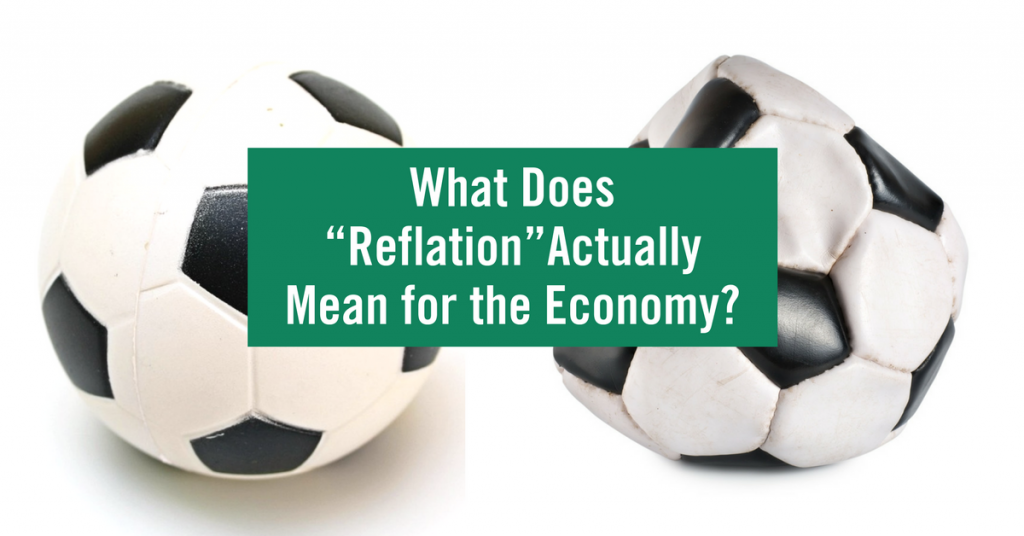What Does “Reflation” Actually Mean?
One of the reasons I started the Sevens Report more than five years ago was because I hated the overuse of jargon by analysts and commentators. Frankly, markets and economics are not particularly complicated topics. There are a lot of variables involved, so getting the future right is difficult. However, understanding market dynamics and economic conditions is actually mostly common sense, because markets and economies are just the sum of collective actions by people. And, since people generally act in their own best interests, it’s not too difficult to understand markets and economics once you get past the jargon.
To that point, I’ve found myself using the terms “reflation” and “cyclical” entirely too much lately. That’s jargon, and I want to make sure that everyone knows exactly what I mean when I say “reflation trade” or “cyclical outperformance.”
So, what is Reflation?
Reflation is simply the idea that economic growth is going to accelerate in the future. To understand why we use the term reflation, think of the economy as a soccer ball. The ball is full of air when we have consistent 3% GDP growth. But, fallout from the financial crisis has put GDP growth around 2% for nearly a decade. So, the soccer ball (i.e. the economy) is deflated.
However, if we see economic acceleration back to consistent 3% growth, the ball (i.e. the economy) has been “reflated.” So, any economic news that implies better growth is termed “reflation.”
And, since reflation is just the expectation of an accelerating economy, people (i.e. investors and the market) react to that expectation. That reaction, typically, is comprised of:
1) Selling bonds (so higher rates) because in an accelerating economy central banks hike rates and inflation rises, both of which are negative for bonds.
2) They allocate investment capital to sectors of the economy that are more reactive to better economic growth.
These sectors are called cyclicals, because their profitability rises and falls with economic growth (like a cycle). Banks (better economy=more demand for money), industrials (better economy=capital investment in projects), small caps (better economy=rising tide for products and more availability of capital), and consumer discretionary (better economy=more spending money) all are cyclical sectors.
Companies in those sectors usually make more money when the economy is getting better, and the anticipation of that attracts capital at the expense of bonds and “non-cyclical” sectors such as utilities, consumer staples, healthcare, and, increasingly, super-cap tech.
Up until June, the non-cyclicals outperformed because there was no evidence of higher rates or better growth. But in June central banks sent a shot of confidence into the markets, and since then, in anticipation of that economic acceleration, cyclical sectors have outperformed. And, if today’s jobs report is strong, beyond any short term “Taper Tantrum 2.0” that’s likely a trend that will continue, especially given the trend change in bonds.
Skip the jargon, arcane details and drab statistics from in-house research, and get the simple analysis that will improve your performance. Get the simple talking points you need to strengthen your client relationships with a free two-week trial of The Sevens Report. No credit card needed, no commitment—just tell us where to send it.

The post What Does “Reflation” Actually Mean?, July 7, 2017 appeared first on Sevens Report.
source https://sevensreport.com/reflation-actually-mean-july-7-2017/
No comments:
Post a Comment